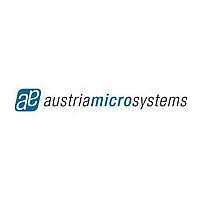as5030 austriamicrosystems, as5030 Datasheet - Page 19

as5030
Manufacturer Part Number
as5030
Description
8-bit High-speed Absolute Magnetic Rotary Encoder
Manufacturer
austriamicrosystems
Datasheet
1.AS5030.pdf
(33 pages)
Available stocks
Company
Part Number
Manufacturer
Quantity
Price
Part Number:
AS5030
Manufacturer:
AMS
Quantity:
20 000
Company:
Part Number:
as5030-ATST
Manufacturer:
AMS
Quantity:
1 001
Part Number:
as5030-ATSU
Manufacturer:
AUSTRIAM
Quantity:
20 000
AS5030 8-bit Programmable Magnetic Rotary Encoder
The magnetic field strength information is available in two forms:
6.3.1
Pin MagRngn (#1) will be low, when the magnetic field is too weak. The switching limit is determined by the value of the AGC. If
the AGC value is <3F
output will be low (red range).
6.3.2
D13:D7 in the serial data that is obtained by command READ ANGLE (5.2.1) contains the 6-bit AGC information (see 5.2.1). The
AGC is an automatic gain control that adjusts the internal signal amplitude obtained from the Hall elements to a constant level.
If the magnetic field is weak, e.g. with a large vertical gap between magnet and IC, with a weak magnet or at elevated
temperatures of the magnet, the AGC value will be high. Likewise, the AGC value will be lower when the magnet is closer to the
IC, when strong magnets are used and at low temperatures.
The best performance of the AS5030 will be achieved when operating within the AGC range. It will still be operational outside
the AGC range, but with reduced performance especially with a weak magnetic field due to increased noise.
6.3.3
In practical use, the AGC value will depend on several factors:
6.3.4
To obtain best performance and tolerance against temperature or vertical distance fluctuations, the AGC value at normal
operating temperature should be in the middle between minimum and maximum, hence it should be around 100000 (20
To facilitate the “vertical centering” of the magnet+IC assembly, the sensitivity of the AS5030 can be adjusted in the OTP
register in 4 steps. A sensitivity adjustment is recommended, when the AGC value at normal operation is close to its lower limit
(around 00
6.4
Rev. 1.8
VSS
VDD
+5V
•
•
•
Micro
Controller
“Pushbutton” Feature
Magnetic Field Strength Hardware Indicator:
Magnetic Field Strength Software Indicator:
Factors Influencing the AGC Value
the initial strength of the magnet. Aging magnets may show a reducing magnetic field over time which results in an
increase of the AGC value. The effect of this phenomenon is relatively small and can easily be compensated by the
AGC.
the vertical distance of the magnet. Depending on the mechanical setup and assembly tolerances, there will always be
some variation of the vertical distance between magnet and IC over the lifetime of the application using the AS5030.
Again, vertical distance variations can be compensated by the AGC
the temperature and material of the magnet. The recommended magnet for the AS5030 is a diametrically magnetized,
5-6mm diameter NdFeB (Neodymium-Iron-Boron) magnet. Other magnets may also be used as long as they can
maintain to operate the AS5030 within the AGC range.
Every magnet has a temperature dependence of the magnetic field strength. The temperature coefficient of a magnet
depends on the used material. At elevated temperatures, the magnetic field strength of a magnet is reduced, resulting
in an increase of the AGC value. At low temperatures, the magnetic field strength is increased, resulting in a decrease
of the AGC value.
The variation of magnetic field strength over temperature is automatically compensated by the AGC.
OTP Sensitivity Adjustment
VDD
H
VSS
). The default sensitivity setting is 00
Output
Output
I/O
H
, the MagRngn output will be high (green range), If the AGC is at its upper limit (3F
LED1
1k
11
10
12
1
MagRngn
DIO
CS
CLK
14
C1
13
15
VDD
C2
AS5030
www.austriamicrosystems.com
VSS
3
H
= high sensitivity. Any value >00H will reduce the sensitivity (see 5.2.4).
100n
Using the magnetic field strength software and hardware
indicators described above, the AS5030 provides a useful
method of detecting both rotation and vertical distance
simultaneously. This is especially useful in applications
implementing a rotate-and-push type of human interface (e.g. in
panel knobs and switches).
The MagRngn output is low, when the magnetic field is below
the low limit (weak or no magnet) and high when the magnetic
field is above the low limit (in-range or strong magnet).
A finer detection of a vertical distance change, for example
when only short vertical strokes are made by the pushbutton, is
achieved by memorizing the AGC value in normal operation and
triggering on a change from that nominal the AGC value to
detect a vertical movement.
Figure 24: Magnetic field strength indicator
H
), the MagRngn
Page 19 of 33
H
)












